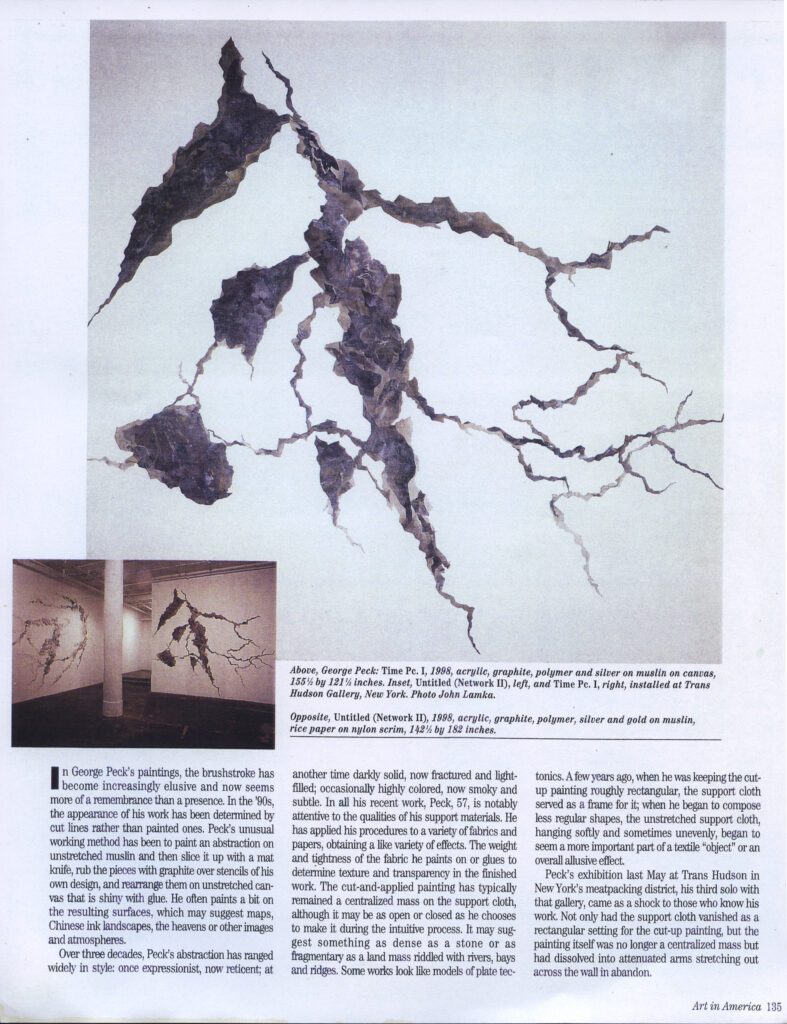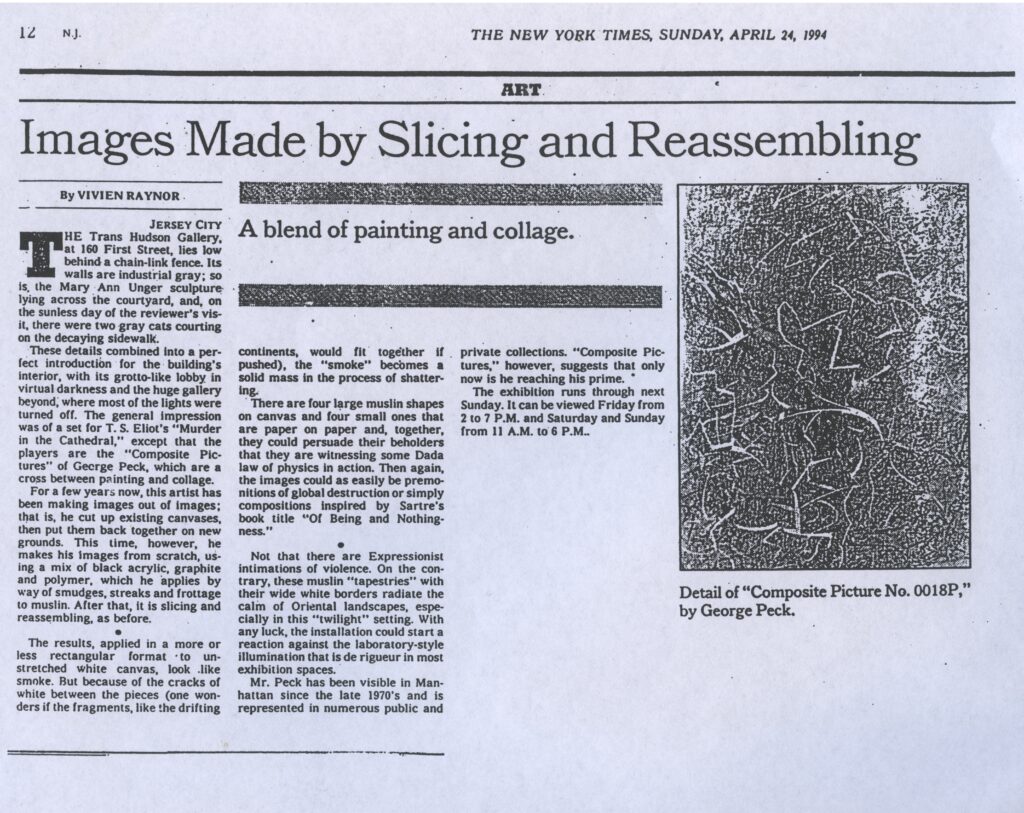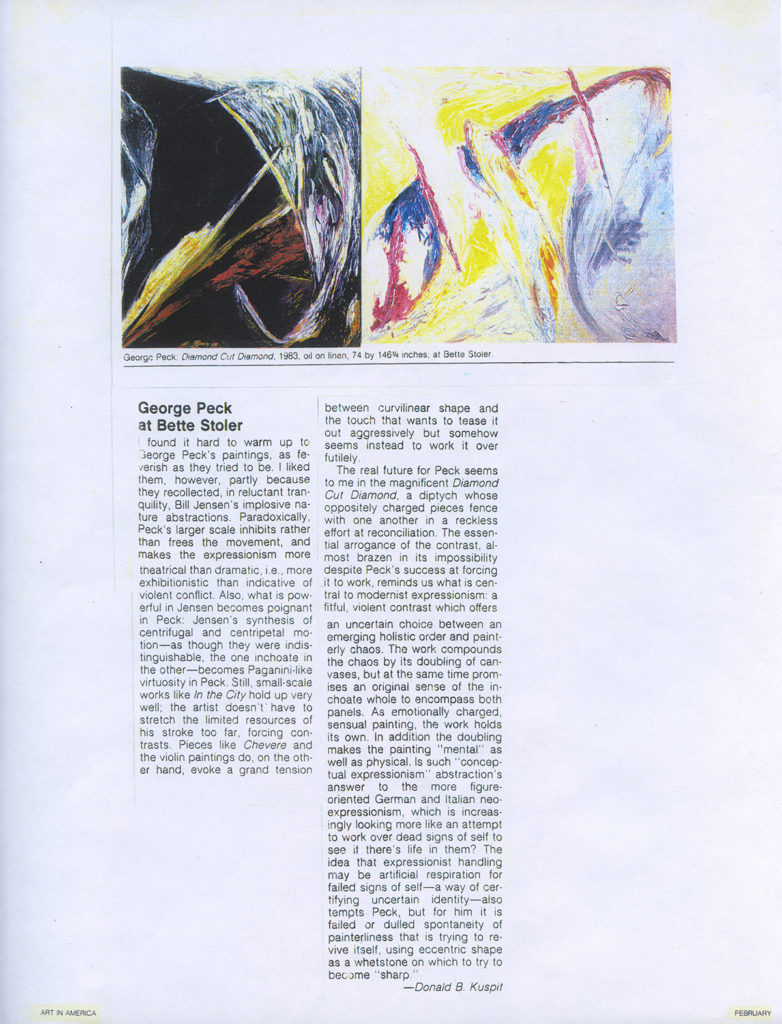No products in the cart.
Reviews
2019. Brendan Seibel’s “A Burning Need for Art“, Adobe Create Magazine, February:
“At [New York’s Museum of Jewish Heritage], video projections of people throwing books into the fire illuminated flowing scrims, surrounding a sculptural pyre lit by video flames. Exhibition visitors were engulfed in the hellscape of burning books. ‘We really think that the power of the piece is that the viewer comes into the space, and the space is taken over by the video projections,’ says Peck. ‘The person comes in and they are inside the action; they are not viewing the action per se but are part of the action.’
Disembodied voices intoned book titles and authors, which were echoed physically by shelves of neatly arranged jars of ashes labeled with titles of books burned by the Nazis in Germany in 1933.
…The frightening truth of BOOKBURN is that it can resonate with audiences anywhere.”
2008. R.C. Baker “The Abstract Desert – Random Utterness.” The Village Voice.
2005. Agnes Berecz PhD. “Review: Moving Images.” Art Magazine, March-April 2005. p.4546
2003. Joe Fyfe “The Supremacy of Installation“ The New York Times, September 2003
2002. Michael Fehr. “Everybody is Afraid of Red, Yellow and Blue.” Color – A Life of its Own. Kunsthalle Műcsarnok, Budapest. p. 38-43.
2000. Edit Andras PhD. “His Genes.” Elet Es Irodalom (Life and Literature), 50th Issue.
“George Peck is not making an imprint of the surface of present reality; instead, what he lifts into his painting is the new way of thinking. He himself becomes the genetic engineer, who no longer treats the body of the painting as a given, intended by nature or God, but interferes with the structure of that body on the level of its basic building blocks, the cells and even the coding of inherited features. He inserts ‘alien’ materials, prosthetic devices, and transplants organs and skin: pieces of material, textures and surfaces. In terms of our metaphor, he is manipulating the DNA of the painting. Leaning over a surgical table, as it were, we can see his body-paintings/painting-bodies present a microscopic close-up of the bleeding, oozing body, the trembling tissue of the painting in all its fallible, vulnerable nakedness.
…[Peck] immerses himself in the present completely and if his language is panting, that is what he will use to enter public discourse. Consequently, he does not accept the tenet of the death of painting, the tenet according to which the inherited tools are obsolete, unsuitable for reflection and particularly dialogue. The role of a mere chronicler of intellectual developments – always arriving after the fact – is declined by him too as narrow and constraining. Decorative art with its function of design appears to him as no longer relevant and even less relevant is ‘karaoke painting,’ offering an interior world of self-absorption and seclusion. What Peck does believe in is the reincarnation of painting, which can only be possible, he claims, if it manages to move on and leave all nostalgic attitudes about its earlier period of life behind. This exhibition offers us new pieces of this reborn, renewed kind of painting, complete with blood, the moist and messy traces of labor, giving birth or the operation, covered with the film of embryonic life: a newborn baby, as it were. A new painting-child is born. Enjoy your visitation rights.”
2000. Jonathon Goodman. “George Peck Works On Paper” Art on Paper, Volume 4, p.7677:
“Peck’s method for arriving at what he calls his ‘composite pictures’ – a term descriptive of both his paintings and drawings – is structurally complex: choosing a particular paper for its weave, he covers it with a mixture of graphite and polymer, applying the latter as a kind of wash with a brush. Handmade stencils and frottage give the works’ surfaces their dense atmosphere, a quality intensified by their very physical texture. The paper itself both supports and embodies the abstract imagery. Peck takes a knife to the finished image and makes linear cuts into the paper so that each drawing becomes a network of incisions that seem to release both light and energy.”
2000. Andras Edit. “Festészet a válaszúton. George peck kiállításai a Kate Ganz és a Trans Hudson Galleryben.” Kötéltánc: Tanulmányok az ezredvég amerikai képzőművészetéről (Rope Dance: Studies in American Fine Art at the End of the Millenium) p. 102-109.
2000. Andras Edit. “A festmény génjei. George Peck kiállítása az XO Galériában.” Kötéltánc: Tanulmányok az ezredvég amerikai képzőművészetéről (Rope Dance: Studies in American Fine Art at the End of the Millenium). p. 166-168.
2000. Ester Vecsey “Far Ahead of his Time“, The Budapest Sun
“According to noted Hungarian art historian Edit Andras, Peck (metaphorically) operates like a surgeon, groping into the very fabric of the living organism, cutting slicing, stitching, transplanting, suturing, constantly involved in the very act of creation.
His works seen up close are fascinating complex organisms, each with its own highly subtle differences, in delicate materials, shapes, hues, textures, each calmly pulsating with its own very own Peck-given energy.”
1999. Janet Koplos. “Dematerializing the Canvas.” Art In America. p.134 -137. :
1997. Jonathan Goodman. “Review.” Art In America. January 1997 p. 93:
“In the four paintings exhibited, Peck showed just how much command of his method he has. The cuts result in jagged, often geometrical spaces that create a musical rhythm, one accentuated by the white ground of the canvas to which the pieces are affixed. The irregular edges look like Peck’s inspired interpretation of the fractal – a shape that is repeated across all scales of measurement. Thus, the smallest cut is representative of the overall pattern in Peck’s art. At the same time, this method works as a metaphor for modern life – it is an act of violence, rendered eloquent by the artist’s direction.”
1995. János Sturcz. PhD. George Peck: Composite Pictures. Budapest: Kunsthalle Műcsarnok, 1995.
1994. “George Peck at Trans Hudson Gallery“, Hudson Current, April 21-27, 1994
“Peck has been known for his enigmatic, minimal curved, surface paintings. In more recent years he has been making what he calls ‘re-paintings’ in which he sliced up his paintings and reattached them to a painted background. In effect the pieces of the original painting became brushstrokes in the new one, creating a surface full of energy, ambiguity and strange beauty.
This led him to the current work, the composite pictures, in which he uses a combination of techniques to achieve a timeless image that is both energetic and peaceful.”
1994. Vivien Raynor. “Images Made by Slicing and Reassembling” The New York Times, April 1994. p. 12:
1987. Lilly Wei. “Talking Abstract.” Art In America. July 1987. p. 80 97.
1985. Vivien Raynor,. “Review.” The New York Times. 8 February 1985: p.C32.
1983. Donald Kuspit. “George Peck at Bette Stoler” Art In America, Feb. 1983:
1978. Carter Ratcliffe. “In the Realm of the Monochromatic” Art International, 1978
Date:
November 9, 2022







